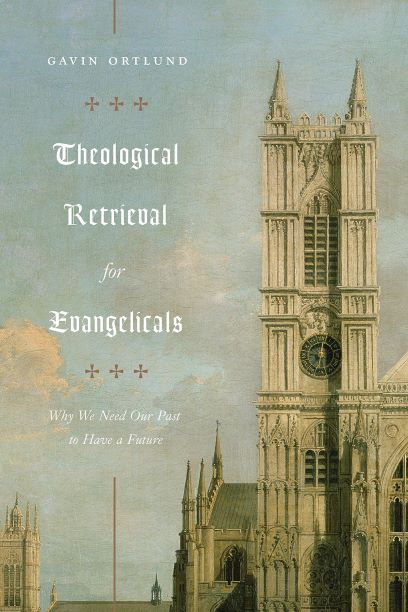Gavin Ortlund
Wheaton, Illinois: Crossway, 2019. 206 pages. Softcover. $21.99.

Reviewed by Samuel Wirgau on 09/01/2020
In his work, Gavin Ortlund makes the case for the use of theological retrieval, the reading and implementing of patristic and medieval theology from various fathers of the church, among evangelical Christians. He appears to have in mind specifically modern evangelical Christians who would typically not be associated with this use of the church fathers, and he is convinced that they will benefit from it. He writes, “This book stems from the conviction that has been formed in me about the tremendous value of retrieving the past and broadly aims to encourage more evangelicals to join in this effort” (13).
Ortlund begins by laying out the evidence that evangelicals may, can, and should utilize theological retrieval and engage the early church and medieval church fathers. He identifies a deep need and longing within modern evangelicalism for the teachings of the past, while at the same time maintaining an awareness of the concern that such studies of the early and medieval church fathers may lead to a “conversion” to Roman Catholicism or Eastern Orthodoxy. He is confident “that evangelicals can cultivate a sense of historical placement without abandoning evangelicalism” (52).
While giving reasons for the permissibility, benefit, and need of theological retrieval among evangelicals, the “how” of theological retrieval is lacking in the first half of this book. The second half of the book presents several case studies where Ortlund demonstrates theological retrieval in the areas of creator/creation distinction and the extra-Calvinisticum, Divine Simplicity, Atonement, and the Pastoral ministry, drawing from such early church sources as Boethius, John of Damascus, Irenaeus, Anselm, Athanasius, Gregory the Great, et al.
The first case study appears rather weak in its use of theological retrieval, drawing only from one ancient source (Boethius, 477–524) and two post-Reformation sources (John Calvin, 1509–1564, and Thomas Torrance, 1913–2007). All these studies are nonetheless worth reading to see Ortlund’s use of early and medieval church sources and to critically engage in the theological topics presented in each.
To those reading this review, the benefits of theological retrieval, even if the term is unfamiliar, will appear quite obvious. Many Christian traditions, even Protestant traditions, have not lost the value of the past and of particularly the theological articulations and writings of the early and medieval church. The Evangelical Lutheran Book of Concord has had appended to it the Catalog of Testimonies, using theological retrieval to show that what is confessed concerning the two natures of Christ is in line with and informed by not only Scripture, but the testimonies of the church fathers. Lutherans are hardly alone on this.
However, it is apparent that the value of the church fathers and this use of theological retrieval, though on the rise among evangelicals, has also been largely lacking and overlooked in many Protestant circles. The importance of sola fide has been overshadowed by an unhealthy form of biblicism that not only overlooks the teachings of 1,500 years of church history, but also often falls into the danger of personal interpretation over an established confession. Ortlund points out, “To the extent that evangelicals adopt a kind of ‘me and my Bible’ theological method, as though theology can be done without appropriation of the battles and settlements of earlier generations, we diminish and destabilize our theological witness” (57).
Even if you do not need to be convinced of the treasures of the early and medieval church fathers, and even if you are not an evangelical, this book provides a window into the contemporary evangelicals’ reception of theological retrieval, as well as how this retrieval is used in articles of doctrine to which one may agree or disagree with contemporary evangelicals’ interpretation.



